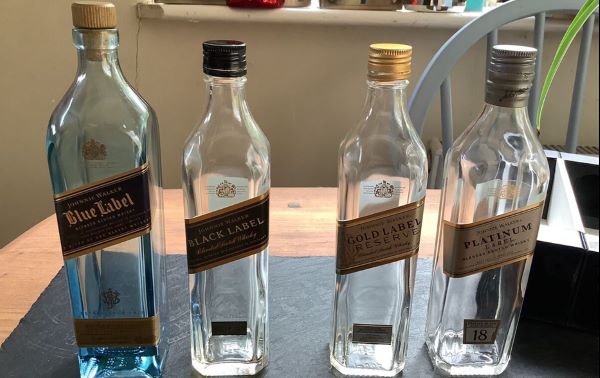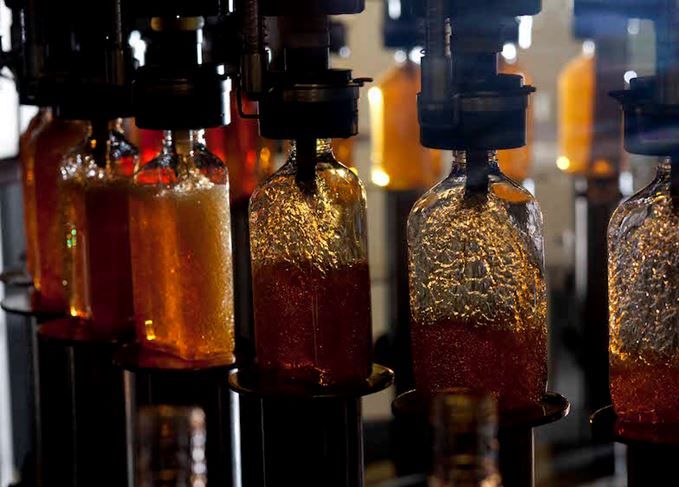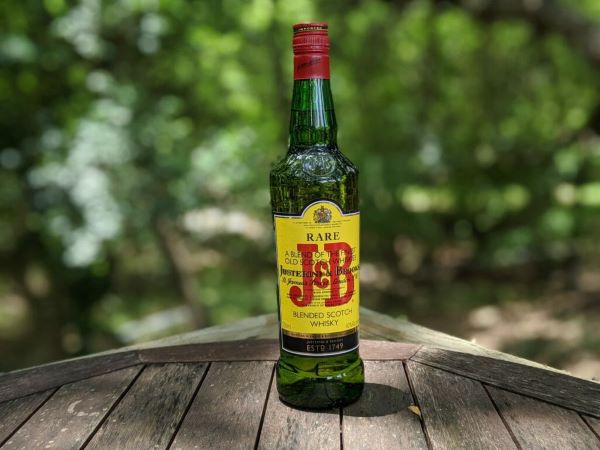Fake and Fortune
In India every bottle of Johnnie Walker is said to have ten lives. Refilling empties and selling them on is an age-old problem, but gangs are now involved in everything from packaging to distribution. Ron Emler reports on the industry's latest moves to stem the tide of fake Scotch …
Take a high value product, promote its exclusivity and sell it at a premium price. That makes it the perfect target for fakers and forgers and Scotch whisky is high on their hit list.
It is also a subject distillers and brand owners are reluctant to discuss. While they want to protect the integrity of their brand, their prime concern is consumer safety, but the two are interlinked.
Any suspicion of a health risk from a fake bottle's contents could undo decades of brand building and consumer loyalty. The distillers have brand protection teams – often employing locals to allay suspicions – but are determined not to offer clues as to how they track down the counterfeiters.
Such is the international scale and organisation of the illicit trade that distillers including Diageo, Pernod Ricard and William Grant & Sons have come together to pool information and effort through the London-based Alliance Against Counterfeit Spirits (AACS).
Scotch whisky has been targeted for decades. The most basic fraud is a licensee refilling a bottle on optic with an inferior, cheaper spirit and hoping that nobody but the most discerning customer will spot the difference.
At a more sophisticated level is the collection of empty bottles of a premium brand, filling them with a fake liquid and selling them directly to the public, especially via burgeoning e-commerce platforms such as Alibaba or Ebay.
A cursory search of Ebay reveals "empties" and original boxes of deluxe brands on offer for a few pence to up to £250.

While there are genuine collectors, thousands of these bottles are destined to be filled and resealed ready to dupe unsuspecting online buyers hoping for a bargain. One estimate is that up to 40% of bottles offered in the secondary market are fakes.
In 2018 laboratory tests at the Scottish Universities Environmental Research Centre on 21 different bottles of rare Scotch, then potentially worth around £635,000, showed them all to be fakes.
Based on those results, Rare Whisky101, an expert in rare bottles, estimated that £41million worth of rare whisky then circulating in the secondary market and present in existing collections was fake.
Even distillers themselves have been scammed. At the turn of the millennium, The Macallan sought to compile a collection of its rare and aged whiskies. Doubts were raised about the authenticity of samples from 1936 - 1945 bought on Ebay from Italy. Tests revealed a minute but significant trace of radiation which could only have been present in the barley used for distillation after atmospheric nuclear testing began in the 1950s. The bottles were fakes and Macallan dropped the project.
David Francis, managing director of AACS, is certain the volume of refilled fakes has swollen since the Covid pandemic, when e-commerce mushroomed. But, he says, "it's very hard to do anything about online marketplaces and platforms."

"Because they [the empties] are genuine bottles, they are no different than selling second-hand shoes," he says.
The Scotch Whisky Association (SWA) works to protect the generic identity of Scotch Whisky through Geographical Indication (GI), a form of intellectual property which grants special status for product names intrinsically associated with their origin. Scotch Whisky now has GI recognition in nearly 100 markets.
So, if an entrepreneur launches a whisky in bottles festooned with pipers and saltires distilled anywhere but Scotland, the SWA will act.
It claims that at any one time its legal team will be handling around 60 cases in courts around the world and be involved in over 100 investigations into suspicious products.
More disturbing is the explosion of an international network centred in China to produce counterfeits of famous Scotch brands and distribute them through a global supply chain.
No matter the sophistication of QR codes, holograms and other devices used to protect the intellectual property (IP) of a brand, if the potential profit is sufficiently large, the fakers can reproduce them ad infinitum.
"It's happening on an industrial scale", says Francis, "and IP law is almost preventing us from dealing with the consumer health issue."
Bottles might be made in China, labels and tax stamps copied in Vietnam and closures produced elsewhere in South East Asia.
At the 112th China Food, and Drinks Expo in Chengdu at the end of March the AACS team found 14 suppliers openly selling bottles, caps, closures and cartons.
"We see these large-scale producers of counterfeit and we do a lot of work on tackling them, but it's quite difficult because IP law gets in the way," Francis says. "Sometimes there will be no IP on the bottle."
"At least in the old days when they were recycling bottles, there was some natural dampening on the amount of counterfeit that could be produced relative to the genuine business but today you potentially get shadow businesses that are bigger than the original one," he says.
"There's a bit of gold rush going on. The people who got rich in the Californias Gold Rush were those that made the shovels, not the guys panning for gold. Some people are doing very well at scale out of this even if it is smaller cells doing the actual refilling or the filling."
The gangs are extremely savvy about avoiding detection. Keeping all the components of counterfeit Scotch whisky bottles separate until the final stage is key to the fraud. "It's all about managing risk, their risk," Francis says.
"As soon as you put the liquid in the bottle it is suddenly a criminal offence, as opposed to staying under the threshold by keeping a load of components separate."
Nor is there a central facility churning out the finished fakes. In China, the world's biggest market for counterfeit alcohol, the gangs supply the separate components to what Francis calls myriad "Mom and Pop" enterprises, who then assemble and fill them with local spirit and push them into the surrounding market.
The network has become global. Francis points to one scam operated in Spain which, if undetected, could have caused damage of about £1m to the Scotch brand involved. He is schtoom about the identity, but scrutiny of local press pictures shows it to have been J&B, a top-seller in Spain.
Bottles were shipped into Valencia while the required dry goods came via other Spanish ports to a bottler in Rioja who filled them with local spirit. Gang members then hawked them round the innumerable bars on the Costas.
Since its formation, a dozen years ago AACS has been instrumental in the seizure of 7.6m fake bottles, 7.4m closures, 26m bottles, and has been behind 26,000 enforcement actions. Those figures cover all spirits categories, but Francis acknowledges that Scotch brands have been the prime target.
The key to combatting this global counterfeiting is to stop the distribution of the fake bottles and dry goods before they come together. "Once they hit the country and get distributed, we're never going to," says Francis. "But if we can stop them hitting the country it has a big downstream impact on the counterfeiting."
"AACS's remit has evolved over time from just hammering re-fillers on the head to really targeting these upstream points of volume because that's much more effective. Stopping the bottles being filled would be really good," he says.

Ron Emler is a financial journalist who has observed the drinks industry for 50 years. Following a career on The Times and the Sunday Telegraph, he is consultant City Editor at The Drinks Business.
